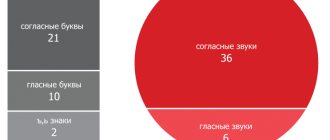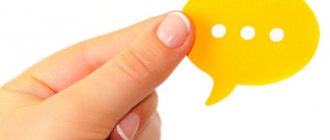The diagnosis of dysarthria is made after a thorough examination by a neurologist and speech therapist. In differential diagnosis, an integrated approach is used, which covers not only speech activity, but also the state of the child’s higher mental functions, behavior, level of mastery of skills, state of vision, hearing, articulation apparatus and motor sphere. No less important is information about the child’s somatic condition and the possible hereditary nature of the disorder. A thorough study will allow not only to make an accurate diagnosis, but also to choose the optimal method for correcting the form of dysarthria.
Differential diagnosis of dysarthria
One of the first signs of dysarthria is pseudobulbar syndrome, which can be noticed already in the first year of a child’s life. Its manifestation is a dull, weak cry or its absence, difficulties in sucking, swallowing, absence of searching and sucking reflexes. The baby does not latch onto the breast well, barely sucks, often chokes, the skin turns blue, milk flows out from under the corner of the lip, and sometimes even from the nose. In the most severe cases, children cannot latch onto the breast at all, swallowing is weakened, and feeding is done through a tube. Such children experience difficulty breathing, breathe shallowly, rapidly, and arrhythmically. When solid food is introduced into the diet, the baby is not able to bite, chew, or drink from a cup, and constantly chokes and gags.
As the child grows up, the state of the motor sphere and speech functions are of great importance in diagnosis. Muscle tone may be excessively increased, decreased, or constantly changing. There is insufficiency of articulatory movements, incorrect position of the tongue in the oral cavity, its impulsiveness, voice disturbance, slow pace of speech, and persistent defects in sound pronunciation. The diagnosis is made by the age of 4, since earlier defects can be corrected due to compensatory functions of the brain.
Diagnostic criteriaThe main diagnostic criteria are:
|
In some cases, with minimal manifestations of dysarthria, functional tests are performed.
Functional tests
Sample 1.
Open your mouth, stick your wide tongue out of your mouth and keep it flat on your lower lip for exactly a few seconds. At the same time, the child should follow with his eyes an object moving from the side. If the tongue deviates towards a moving object along with eye movement, this is a manifestation of dysarthria.
Sample 2
. The child performs swinging movements from side to side, up and down with his tongue, at the same time you need to put your hand on his neck. If, even with weak movements of the tongue, tension in the neck muscles or tilting of the head is detected, the test is positive.
Studying facial motor skills
One of the important stages of diagnosis is the study of facial motor skills. Dysarthric people will find it difficult to raise their eyebrows, wrinkle their nose, squint their eyes, or puff out their cheeks. To examine children with speech disorders, L.A. tests are usually used. Fifth as modified by G. Gellnitz, adapted according to the age of the child.
The following exercises are used:
- Raise your eyebrows (“Surprise”).
- Close your eyelids, first lightly, then tightly.
- Squint your eyes.
- Purse your lips.
- Pull your lips into a tube.
- Open your mouth as if pronouncing the sound “O”.
- Puff out your cheeks (Hamster").
- Bare your teeth, as when pronouncing the sound “I”.
- Clench your teeth (“Fence”).
- Blow with outstretched lips.
All tasks are completed 3 times in a row. Movements are assessed on a three-point scale. Clear implementation - 1 point, insufficiently clear - 2, more than seven tasks not completed - 3 points. With increased tone, the child’s muscles of the face, tongue, lips, and neck are tense. When the mouth is open, the tongue automatically moves back or sticks out forward. When the lips close, it becomes difficult to open the mouth voluntarily. If only the upper lip is tense, the mouth opens slightly and salivation increases. With decreased tone and an open mouth, the child’s tongue is sluggish and spread out, the lips cannot close tightly, the mouth opens all the time, and salivation is observed. With changing muscle tone, the tongue trembles in the mouth. The muscles of the lips and mouth are relaxed at rest, but tense when producing speech. The sound pronunciation is distorted, many sounds are missed.
Articulation
When examining the mobility of the articulatory apparatus, the child is asked to perform the following exercises:
1. Open and close your mouth.
2. Half open, open wide, close your mouth.
3. Alternately pull back the corners of the mouth, as when pronouncing the sound “I”, then make the lips round - “O”; stretch out your lips - “U”. In this case, the teeth should be closed, movements should be made only with the lips.
4. Sticking out a “wide” and “narrow” tongue, holding a given pose for a count of five.
5. Stick out your “sharp” tongue, lift it to the upper lip and lower it to the lower lip.
6. Biting the tip of the tongue.
7. Touching the tip of the tongue alternately to the right and left corners of the mouth, lips - in a smile (“Clock”).
8. Raise the tip of your tongue up, lick your upper lip from top to bottom (“Delicious jam”).
If the child performs movements with a high amplitude or, on the contrary, very slowly, finds it difficult to perform some of the movements, for example, cannot lift the tongue up, or the arms and lower jaw begin to move along with the tongue, the child gets tired and cannot perform the same movement in a row , this indicates the presence of dysarthria. In addition, with dysarthria, speech breathing and voice formation are impaired. The voice fades towards the end of the phrase; in the middle of the phrase the child suddenly begins to choke. Speech is monotonous, slow, with frequent changes in voice modulation and pitch. Dribbling of saliva is observed during speech.
Causes of dysarthria
- toxicosis;
- antenatal hypoxia;
- immune conflict according to the ABO system and the Rh factor;
- chronic pathologies in a mother carrying a child;
- complicated course of labor;
- birth injuries;
- birth before 37 weeks;
- asphyxia.
All these factors can lead to organic brain damage, incl.
centers responsible for speech development. At the same time, cerebral palsy often develops, and its severity correlates with the severity of speech disorders. In addition, dysarthria can develop in early childhood in an initially healthy child. In this case, the reasons lie in severe neuroinfections and intoxications, for example, carbon monoxide, alcohol poisoning, etc., as well as tumors and brain injuries.
The main differences between dysarthria and other speech therapy diagnoses
Dysarthria differs from dyslalia by severe neurological symptoms. In addition, sound pronunciation is grossly impaired; not only the sounds of early ontogenesis are affected, but also vowels. The voice is deaf, weak, fine and general motor skills are impaired, mental processes are reduced: memory, attention, thinking. The child experiences frequent mood swings and hyperactivity. With alalia it is differentiated according to the principle of the absence of primary disturbances in speech production and language operations, which is expressed in the peculiarities of the development of the lexical and grammatical structure of speech.
The main directions of correctional work for dysarthria
When treating dysarthria, an integrated approach is used, and the work of a speech therapist is required. Speech therapy is carried out along with medicinal and non-medicinal means of influence: physiotherapy, medications to relieve muscle spasms, exercise therapy, reflexology, massage. Psychological and pedagogical work is also important, which includes:
|
Dysarthria is one of the most common speech disorders in children.
Depending on the preservation of pronunciation abilities, the following degrees of severity of dysarthric disorder are distinguished:
- erased dysarthria (one or more groups of sounds are disturbed, usually of late ontogenesis);
- dysarthria (a large number of sounds are disturbed, speech is poorly understood, “porridge in the mouth”);
- anarthria (articulation of not only consonants, but even vowels suffers; speech is impossible and consists of inarticulate sounds). Anarthria is quite rare: it often accompanies cerebral palsy or is observed after strokes or traumatic brain injuries.
However, the symptoms of dysarthria are not limited only to problems with sound pronunciation. Common manifestations of this speech disorder are the following symptoms:
- blurred, unclear diction;
- lack of expressiveness of speech;
- short, weak speech exhalation, which forces the child to pause frequently.
In some cases, these disorders are supplemented by disorders of the sound-syllable structure of the word, immaturity of phonemic perception (discrimination of sounds) and lexico-grammatical structure of speech. Then we are talking about general speech underdevelopment (GSD), complicated by dysarthria. What mechanisms cause dysarthria? Most often, pseudobulbar dysarthria occurs in children (approximately 90% of cases of dysarthria in children). It occurs as a result of a violation of the tone of the movable organs of articulation (tongue, lips, soft palate). A risk factor for such dysarthria is the presence of pyramidal insufficiency syndrome in a child in the early period of life.
Pyramidal insufficiency syndrome is a neurological diagnosis that is made by a neurologist in the first months of a child’s life. You can find out about its presence by reading the first notes of this specialist in the child’s medical record.
Pyramidal insufficiency syndrome is often observed in children with perinatal encephalopathy (PEP). Signs confirming the presence of pyramidal syndrome are a variety of muscle tone disorders:
- hypertonicity (increased muscle tone);
- hypotonia (decreased muscle tone); - muscular dystonia (both increased and decreased muscle tone). Muscle tone disorders can be unilateral or affect both halves of the body.
Children with increased muscle tone may begin to stand early (due to high tone of the extensor muscles), walk on tiptoes, without resting on the foot, without bending their knees. With a pronounced decrease in muscle tone, a delay in psychomotor development may be observed - the child later begins to hold his head, sit down, stand, and walk. In a later period, children with impaired tone experience clumsiness and motor awkwardness. Similar problems arise due to bilateral damage to the pyramidal tract.
The pyramidal tract is a neural pathway consisting of neurons (nerve cells) running from the motor areas of the cerebral cortex to the spinal cord. The neurons that form the pyramidal tract are giant (pyramidal) cells (Betz cells). They have very long axons (processes), along which motor impulses from the cortex are delivered to the organs of movement. Part of this pathway is represented by a bundle of cells forming the corticobulbar (corticonuclear) pathway. It starts from the cerebral cortex and ends not in the spinal cord, but higher up - in the medulla oblongata. It is in it that the nuclei of the cranial nerves are located, innervating (supplying nerve impulses) the organs of articulation. Therefore, very often a pathogenic factor that damages motor neurons of the corticospinal pyramidal tract causes disturbances in the corticobulbar tract, which leads to the appearance of dysarthria.
Damage to the corticobulbar tract may manifest itself in the following symptoms:
1. Violation of the tone of the tongue, lips, soft palate.
With increased muscle tone (spasticity), the tongue is tense and sometimes pulled back. It is difficult to perform exercises to spread the tongue (“spatula”). The articulation of many consonants is impaired, and their pronunciation is often softened (“Syabaka and Koska zivut nedroznya”). With reduced tone (pareticity), on the contrary, the child cannot narrow the tongue (“needle”), and it is difficult to lift the tip of the tongue upward (licking the upper lip, upper teeth). A paretic state of the tip of the tongue can lead to interdental pronunciation of whistling, hissing, t, d, n, l. When the lateral edges of the tongue are weak, instead of normal ones, “squelching” sounds are pronounced - l'kh (dog - “l'habaka”). If the tone of the lips is impaired, the clarity of pronunciation of the labial consonants and vowels O, U disappears. A decrease in the tone of the muscles of the soft palate leads to the appearance of a nasal tint (rhinophonia) in speech. With a unilateral decrease in the tone of the muscles of the soft palate, the small tongue (uvula) deviates to the healthy side when pronouncing the sound A.
2. There is hypersalivation (salivation).
Hypersalivation increases blurring and unclear diction.
3. Synkenesis (friendly movements) are observed. The most common synkinesis are:
- throwing back the head when raising the tip of the tongue upward;
- closing the mouth when raising the tip of the tongue upward,
- movement of the tip of the tongue from side to side following eye movements to the right and left;
- movements (raising) of the fingers when raising the tip of the tongue upward.
However, it would be wrong to say that all children with pyramidal insufficiency syndrome will sooner or later develop dysarthria. It all depends on how many nerve cells are damaged, on the area of localization of damage (damage to the corticobulbar tract) and on the possibilities of compensation in case of minimal disturbances. However, the presence of pyramidal syndrome should be perceived as a risk factor for dysarthria.
Children with pyramidal insufficiency syndrome must undergo mandatory medical examination by a neurologist - 2 times a year, and early speech therapy diagnosis.
The timing and effectiveness of rehabilitation treatment and the effectiveness of speech therapy work will depend on the thoroughness of implementation of the neurologist’s recommendations (drug and physiotherapy, massage, exercise therapy).
Author: Elena Moiseenko, 2016
Correction of dysarthria
Speech therapy work will depend on the speech therapy report; programs for working with GSD (general speech underdevelopment) and FFND (phonetic-phonemic speech disorder) are used. The speech therapist conducts classes in three stages:
Stage 1. Preparatory
Includes normalization of breathing and muscle tone, articulatory gymnastics, development of fine motor skills, work with the prosodic side of speech, clarification and development of passive-active vocabulary and the formation of the need for verbal communication. For increased tone, a relaxing massage
, which parents can do at home.
Massage of facial muscles (1.5 - 2 min.) from the temples to the center of the forehead, from the ears to the nose, from the ears to the chin. Massage the lips from the corners to the center along the upper and lower lips, massage the tongue in both directions through a handkerchief. If muscle tone is reduced, a firming massage
for 3 minutes. from the center to the periphery: from the center of the forehead to the temples, from the nose to the ears, from the corners of the mouth to the ears. The child's lip muscles are trained by grasping and holding lollipops, sticks of different diameters with the lips, and drawing in liquid through a straw.
Articulation gymnastics
is aimed at training the muscles of the tongue: introducing the position, fixing the articulatory pose and withdrawing from it.
Work with prosody
is aimed at differentiating different shades of expressiveness, perceiving a rhythmic pattern (clapping, tapping), becoming familiar with narrative, exclamatory and interrogative intonation and their differentiation, and forming various voice modulations (loud, quiet). Dysarthrics have a clavicular type of breathing, so work with them should begin while lying on the speech therapist’s lap. Through tactile sensations - one hand on the stomach, the other on the child's chest - learn to breathe with the stomach and chest.
Stage 2. Formation of primary communicative pronunciation skills
Its goal is to develop control over the position of the mouth, lips, and tongue, the formation of articulatory movements, the development of correct pronunciation of sounds using specially selected speech material, and sound analysis of words. Specific tasks are production, automation and differentiation of sounds.
Work is being done to develop the sensations of articulatory movements and motor-kinesthetic feedback.
Exercises
used include straightening the cheeks, shaking the upper and lower lips, lowering and raising the lower jaw. Sounds are produced in three ways: mechanical, imitative and mixed. Automation includes training exercises with sound in syllables, words, phrases, sentences. Speech material should not include impaired sounds.





